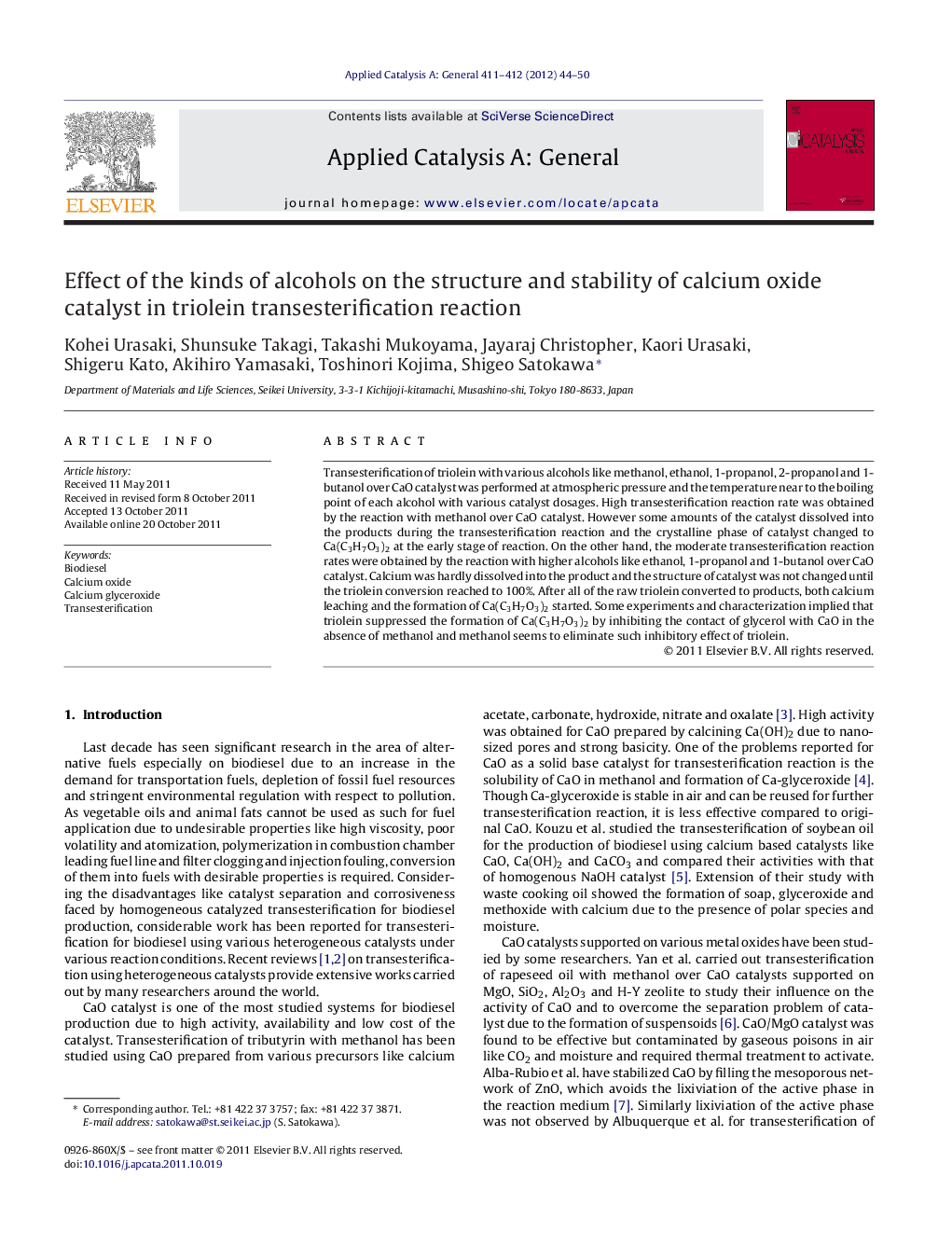| Article ID | Journal | Published Year | Pages | File Type |
|---|---|---|---|---|
| 41268 | Applied Catalysis A: General | 2012 | 7 Pages |
Transesterification of triolein with various alcohols like methanol, ethanol, 1-propanol, 2-propanol and 1-butanol over CaO catalyst was performed at atmospheric pressure and the temperature near to the boiling point of each alcohol with various catalyst dosages. High transesterification reaction rate was obtained by the reaction with methanol over CaO catalyst. However some amounts of the catalyst dissolved into the products during the transesterification reaction and the crystalline phase of catalyst changed to Ca(C3H7O3)2 at the early stage of reaction. On the other hand, the moderate transesterification reaction rates were obtained by the reaction with higher alcohols like ethanol, 1-propanol and 1-butanol over CaO catalyst. Calcium was hardly dissolved into the product and the structure of catalyst was not changed until the triolein conversion reached to 100%. After all of the raw triolein converted to products, both calcium leaching and the formation of Ca(C3H7O3)2 started. Some experiments and characterization implied that triolein suppressed the formation of Ca(C3H7O3)2 by inhibiting the contact of glycerol with CaO in the absence of methanol and methanol seems to eliminate such inhibitory effect of triolein.
Graphical abstractFigure optionsDownload full-size imageDownload high-quality image (171 K)Download as PowerPoint slideHighlights► Transesterification of triolein with C1–C4 aliphatic alcohols over CaO catalyst. ► Ca(C3H7O3)2 formation and Ca leaching occurred in case of methanol. ► The structure of CaO was maintained and Ca did not leach in case of higher alcohols. ► Ca(C3H7O3)2 formation started by continuing reflux after reaction finished. ► Triolein inhibited the contact of glycerol with CaO to form Ca(C3H7O3)2.
